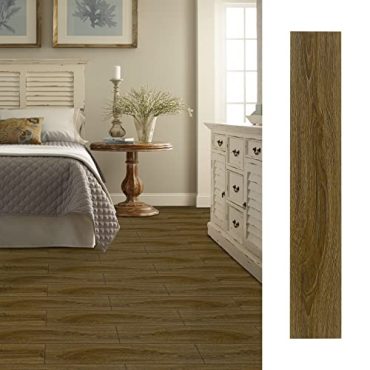Sustainable wood flooring offers several environmental benefits compared to other flooring options. These benefits stem from responsible forest management, reduced carbon footprint, and the use of renewable resources. Here are some of the environmental advantages of choosing sustainable wood floors:
- Renewable Resource: Wood is a renewable resource, meaning it can be harvested and regrown over time. Responsibly managed forests ensure that trees are replanted, leading to a continuous cycle of growth and harvest.
- Carbon Sequestration: Trees absorb carbon dioxide (CO2) from the atmosphere as they grow, helping to mitigate climate change by sequestering carbon. Wood products, including flooring, store carbon throughout their lifespan, thus reducing the carbon footprint associated with manufacturing and use.
- Low Energy and Water Usage: The production of wood flooring requires less energy and water compared to other flooring materials like concrete or tile. The manufacturing process for wood flooring typically involves fewer resource-intensive steps.
- Lower Greenhouse Gas Emissions: The energy-intensive processes involved in producing materials like carpeting or synthetic flooring can generate significant greenhouse gas emissions. Wood flooring production generally emits fewer greenhouse gases, contributing to a more sustainable product lifecycle.
- Biodegradability: At the end of its useful life, wood flooring is biodegradable, meaning it can decompose naturally without leaving behind long-lasting waste or toxins. This reduces the burden on landfills compared to non-biodegradable flooring materials.
- Reduced Environmental Impact: Sustainable forest management practices prioritize biodiversity conservation, soil protection, and habitat preservation. These practices ensure that ecosystems are minimally disrupted while maintaining a healthy balance between human activities and nature.
- Eco-Friendly Finishes: Many sustainable wood flooring options use eco-friendly finishes and adhesives that have lower levels of volatile organic compounds (VOCs), which can contribute to indoor air pollution. This improves indoor air quality and supports a healthier living environment.
- Long Lifespan: High-quality wood flooring, when properly maintained, can have a longer lifespan compared to other flooring options. This longevity reduces the need for frequent replacements and minimizes the associated environmental impact.
- Recyclability: Even at the end of its life, wood flooring can often be repurposed or recycled. For instance, old wood flooring can be reclaimed and used for various purposes, extending its useful life and reducing waste.
- Supporting Sustainable Forestry: By choosing wood flooring from certified sustainable sources, you’re supporting responsible forest management practices. Certification programs like the Forest Stewardship Council (FSC) ensure that the wood is sourced from well-managed forests that prioritize environmental, social, and economic considerations.
- Promotion of Healthy Ecosystems: Sustainably managed forests play a crucial role in maintaining biodiversity, supporting wildlife habitats, and conserving water resources. By opting for sustainable wood flooring, you contribute to the preservation of these ecosystems.
When considering sustainable wood flooring, look for certifications such as FSC, which ensure that the wood comes from responsibly managed forests. It’s also essential to research the manufacturer’s practices, including their commitment to sustainability and the use of environmentally friendly finishes and adhesives. Choosing sustainable wood flooring aligns with environmentally conscious living and contributes to the preservation of our planet’s resources.















